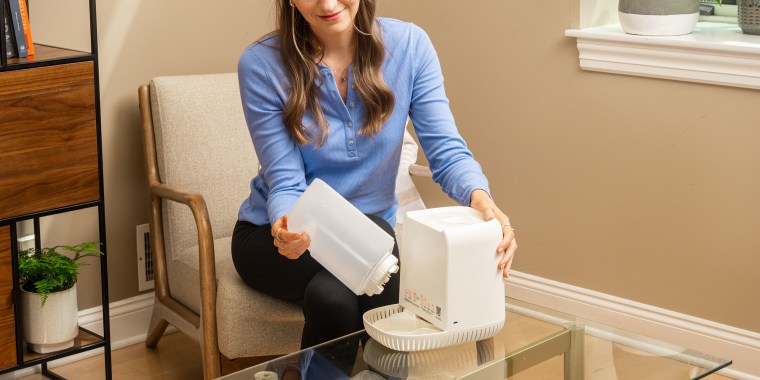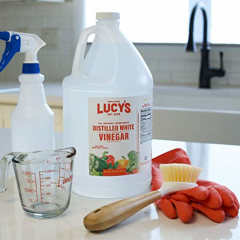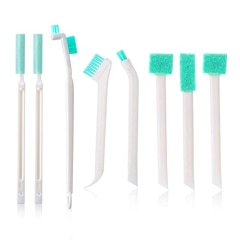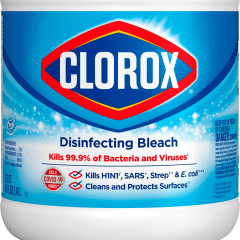Using a humidifier, especially in arid environments, adds moisture to the air in your house. Having a humidifier in your bedroom can help keep your skin, nose, lips, throat and sinuses from getting too dried out at night and contribute to better sleep. Some humidifiers are even designed to help stave off airborne bacteria.
However, the opposite can happen if your humidifier isn’t kept clean. A moldy humidifier can wreak havoc on your health and interfere with your ability to get your zzz's.
Luckily, we spoke to Saya Hazel, director of digital marketing at Pure Enrichment, to get her expert tips on how to clean a humidifier — even if you've fallen behind on regular cleanings and need to deep clean it.
"Routinely cleaning your humidifier has many benefits," Hazel says. "It will keep it running smoothly, remove buildup that may have accumulated over time, and keep it running at optimal performance."
How often to clean your humidifier | How to clean a humidifier with bleach | How to clean a humidifier with vinegar | How to clean the humidifier wick | How to clean a cool mist humidifier | How to maintain a humidifier | The best products for cleaning your humidifier
How often should you clean your humidifier?
It's important to keep your humidifier clean. Home care experts typically recommend cleaning your humidifier at least once a week. While this may seem like overkill, you really don’t want to have any mold in your humidifier that could spew out into the air you breathe. If someone in your household has respiratory problems, including asthma or bad allergies, the humidifier should be cleaned even more frequently.
The best products for cleaning your humidifier
Cleaning your humidifier properly is a snap when you have all the right tools at hand to get the job done!
How to clean a humidifier with bleach
If your humidifier hasn't been cleaned in several months or has visible mold inside, you'll want to give it a deeper clean using liquid chlorine bleach. When deep cleaning humidifiers in your home, you can follow the same steps as outlined below, but be sure to get the proportions of the chlorine-water mixture right.
Mix one gallon of water with one teaspoon of liquid chlorine bleach and then pour about half of that mixture into your humidifier to clean it. Let it sit for at least 20 minutes, then rinse until the smell of the bleach is completely gone. Wipe dry.
How to clean a humidifier with vinegar
To deep clean, descale and/or remove mold from the base or tank, it is safe to use a 1:1 ratio of white vinegar and water on most humidifiers, advises Hazel.
"Add the solution to the base or swish and shake in the tank. After coating with the solution, gently scrub as needed, rinse thoroughly, and air dry completely before use."
She notes that you should not run the humidifier with this solution — this should only be used for cleaning.
How to clean the humidifier wick
It's best to avoid trying to clean the wick filter in a humidifier. Even if you're being delicate, the wick is easy to damage. If the wick is dirty, it's best to replace it.
How to clean a cool mist humidifier
Fortunately, it's pretty easy to clean a humidifier. You don't need any abrasive detergents or harsh chemical cleaning supplies to wash a household humidifier. In fact, you can do it with basic household materials. You'll need:
- A small cleaning utensil like these brushes
Liquid chlorine bleach (in case you need to do a deep clean)
Every model differs slightly, so be sure to consult the owner's manual (or by searching for your model online for instructions) to understand the particulars of your humidifier, whether you're trying to clean a cool mist humidifier or a warm mist one.
For the most part, all humidifiers can be sufficiently cleaned using this same process.
Unplug the humidifier, disassemble it and empty the tank completely. Stagnant water is what allows mold and bacteria to grow, so you want to make sure you're getting that old water out. If any parts of the machine feel a little mucky or grimy, that means your humidifier is overdue for a cleaning.
With the humidifier unplugged, fill the tank with water as you normally would, but then add 1-2 tablespoons of distilled white vinegar to the tank. Swish it around and then let the mixture sit in the tank for 30 minutes. When cleaning a humidifier with vinegar, the vinegar acts as a disinfecting agent. Do the same with the humidifier's base, washing it out with the vinegar-water solution and then letting it sit for a half hour.
Empty the base and the tank. Use your brush to clean any leftover greasy spots, as well as the smaller parts of the humidifier like the tank lid — a notorious spot for mold. Do NOT submerge the base in water as most humidifiers have electrical components in the base.
- Rinse all the parts thoroughly with water. Then, let them air dry before reassembling.
Note: Hazel advises making sure you're following the instructions from the manufacturer to prevent water from entering any motors or electrical components in the base.
How to maintain a humidifier
Now that you're in the practice of good humidifier hygiene, here are some general maintenance tips from Hazel to keep your humidifier in good working order.
- Unless otherwise specified, do NOT use essential oils, perfumes or substances other than water in your humidifier. These substances can potentially cause corrosion, leaking, and cracking.
Use distilled water to keep mineral buildup to a minimum.
If your humidifier is not in use, don't let water sit inside the tank or base. Remember: stagnant water breeds mold. If you're not actively using your humidifier, empty it completely and make sure it completely dries before you put it away.
Replace the filter every 1-2 months. The filter is another place where bacteria can accumulate. If your filter is giving off an odor or feels crusty to the touch, replace the filter before continuing to use your humidifier. A good way to extend the life of your humidifier filter is to turn it over each time you fill the tank for use. This will wear the filter more evenly and prolong its cleanliness.
If you are putting your humidifier in storage — in addition to drying it out completely — remove the filter from the machine since it can hold on to moisture. Be sure to follow the manufacturer's instructions when disassembling or reassembling your humidifier.
To keep the tank water pure, do NOT place it in direct sunlight and only use your humidifier indoors.
A decalcification cartridge (like this one) may be used to keep white dust from developing. Just make sure it is compatible with your humidifier.




